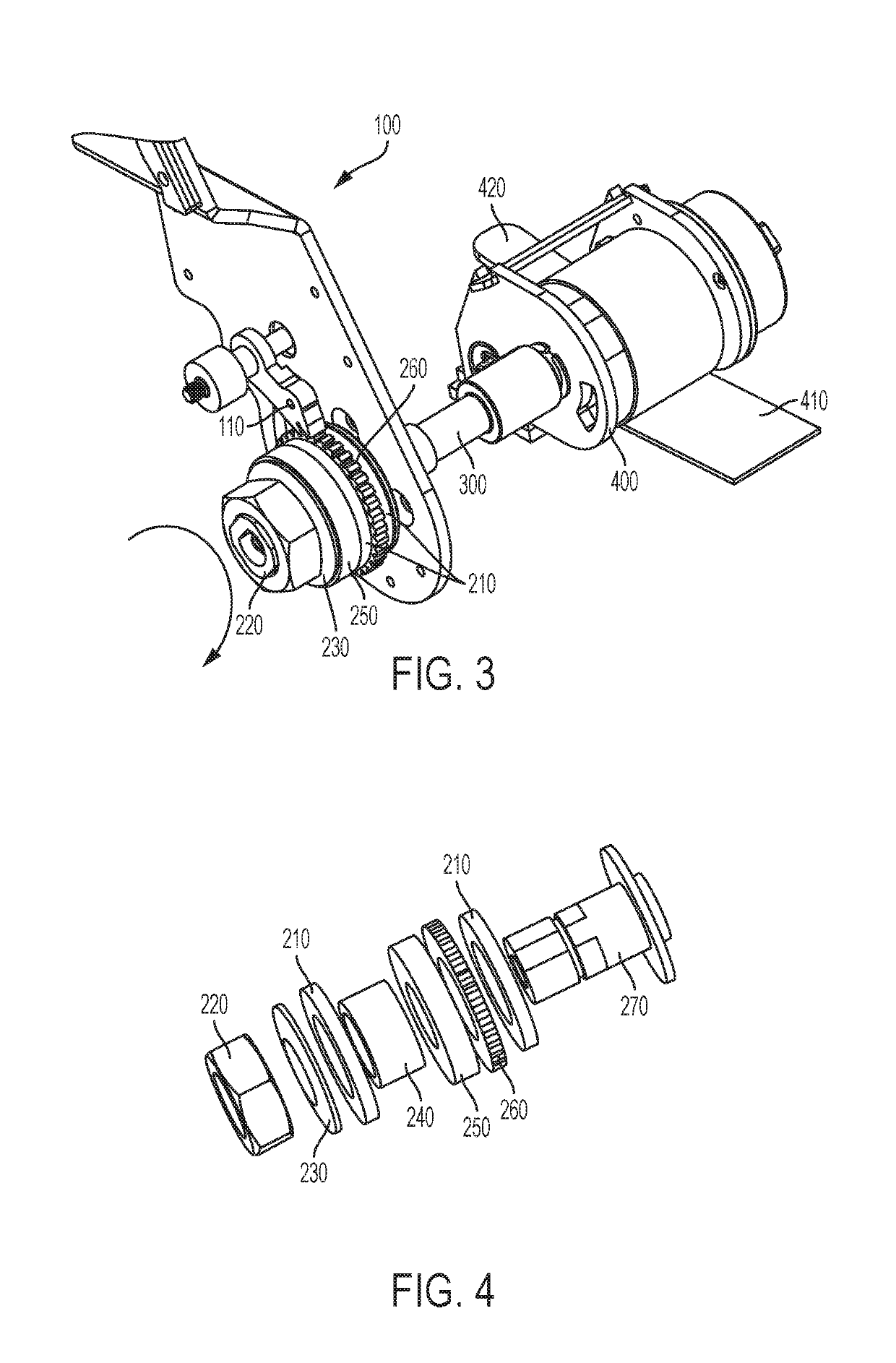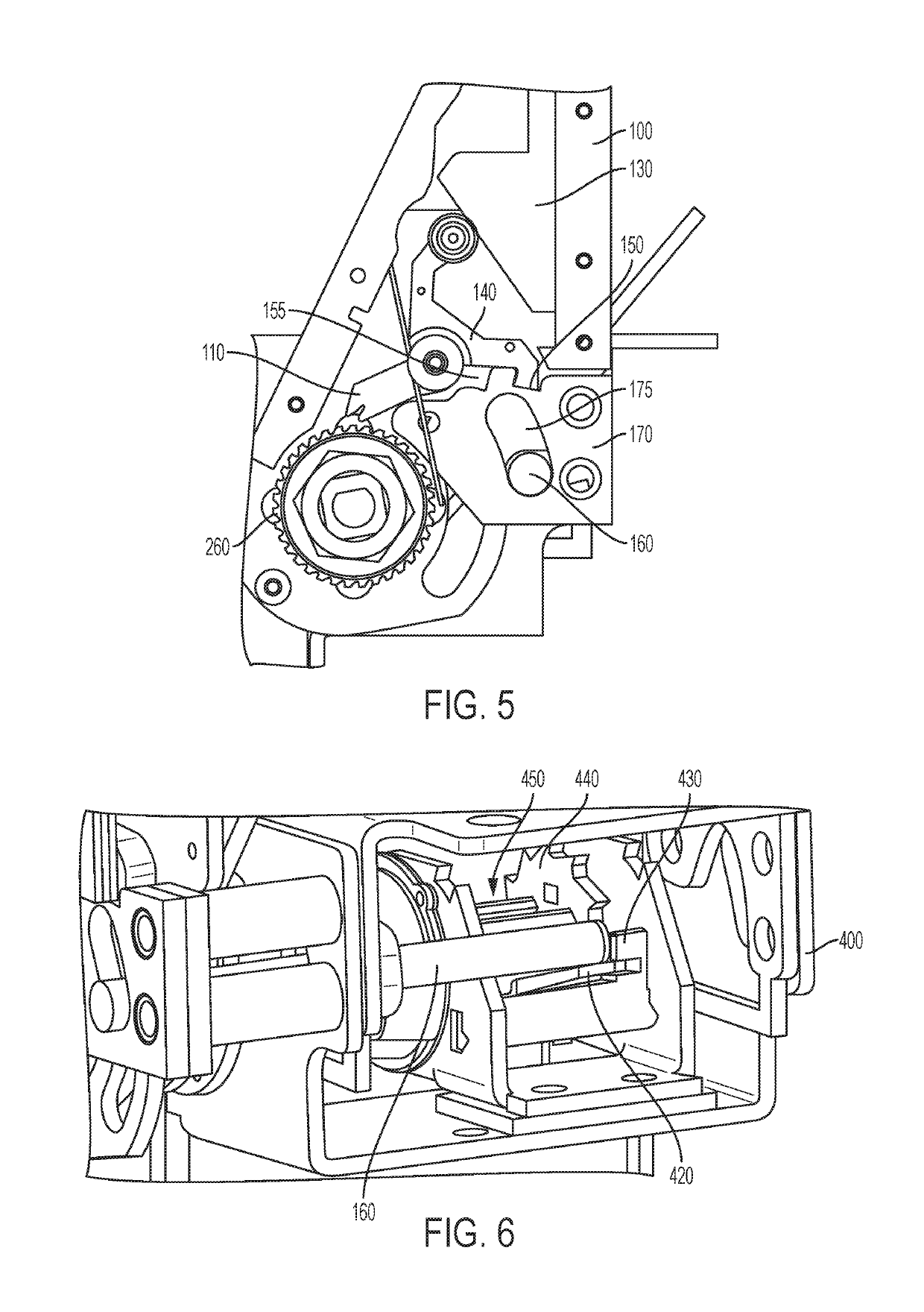Mobility restraint device tensioner
a technology of restraint device and tensioner, which is applied in the direction of slip couplings, transportation items, couplings, etc., can solve the problems of inability to install current system tensioners, many vehicle retrofit opportunities pose difficult challenges, and limited clear aisle spacing, etc., to reduce the potential interference with existing fixed obstructions, reduce the footprint, and ensure the effect of installation and us
- Summary
- Abstract
- Description
- Claims
- Application Information
AI Technical Summary
Benefits of technology
Problems solved by technology
Method used
Image
Examples
first embodiment
[0023]FIG. 1 is a perspective view of a tensioner;
[0024]FIG. 2 is a second perspective view of the first embodiment showing the clutch mechanism;
[0025]FIG. 3 is a third perspective view of the first embodiment showing additional components of the clutch mechanism;
[0026]FIG. 4 is an exploded view of the clutch mechanism for the first embodiment;
[0027]FIG. 5 is first side view of the first embodiment showing the release button mechanism in the stow mode;
[0028]FIG. 6 is a fourth perspective view of the first embodiment showing internal components of the release button mechanism in the stow mode;
[0029]FIG. 7 is a second side view of the first embodiment showing the release button mechanism in transition from the stow mode to the tension mode;
[0030]FIG. 8 is third side view of the first embodiment showing the release button mechanism in the tension mode;
[0031]FIG. 9 is a fourth side view of the first embodiment showing the safety indication mechanism in the stow mode;
[0032]FIG. 10 a fift...
second embodiment
[0033]FIG. 11 is a first side view of a tensioner in the stow mode;
[0034]FIG. 12 is a first front view of the second embodiment in the stow mode;
[0035]FIG. 13 is a second side view of the second embodiment in the tension mode;
[0036]FIG. 14 is a second front view of the second embodiment in the tension mode;
[0037]FIG. 15 is a first perspective view of the second embodiment showing the clutch mechanism; and,
[0038]FIG. 16 is a second perspective view of the second embodiment showing the safety indication mechanism.
[0039]It should be understood that the drawings are not necessarily to scale and that the embodiments are sometimes illustrated by graphic symbols, phantom lines, diagrammatic representations and fragmentary views. In certain instances, details which are not necessary for an understanding of the embodiments described and claimed herein or which render other details difficult to perceive may have been omitted. It should be understood, of course, that the inventions described h...
PUM
 Login to View More
Login to View More Abstract
Description
Claims
Application Information
 Login to View More
Login to View More - R&D
- Intellectual Property
- Life Sciences
- Materials
- Tech Scout
- Unparalleled Data Quality
- Higher Quality Content
- 60% Fewer Hallucinations
Browse by: Latest US Patents, China's latest patents, Technical Efficacy Thesaurus, Application Domain, Technology Topic, Popular Technical Reports.
© 2025 PatSnap. All rights reserved.Legal|Privacy policy|Modern Slavery Act Transparency Statement|Sitemap|About US| Contact US: help@patsnap.com



